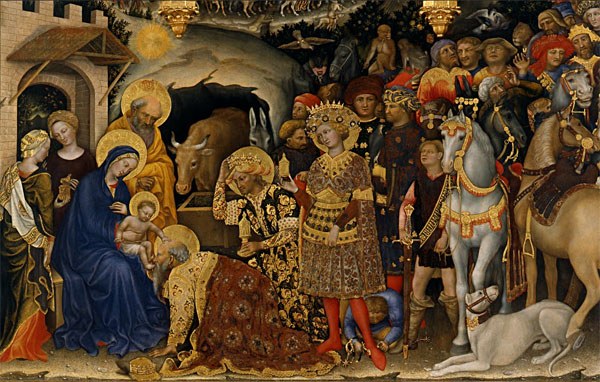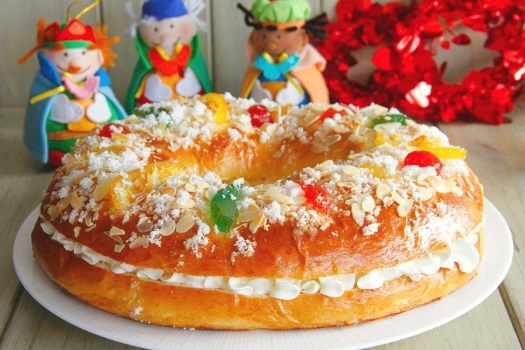6th January - the Feast of the Epiphany
Epiphany is from Greek language meaning 'manifestation or appearance'.
This
was the day the Three Wise Men, aka the Three Kings or The Magi,
arrived, after following a shining star, and presented baby Jesus with
Gold, Frankinsense and Myrrh. The three gifts had a spiritual meaning:
- gold as a symbol of kingship on earth,
- frankincense (an incense) as a symbol of deity,
- and myrrh (an embalming oil) as a symbol of death.
This dates back to Origen in Contra Celsum:
"gold, as to a king; myrrh, as to one who was mortal; and incense, as to a God."
| Gentile da Fabriano, Adoration of the Magi, 1423, in the Uffizi Gallery. |  |
The Feast of Epiphany is traditionally Spain's main festive holiday,
On "El Día de los Reyes" Spain and Latin American countries celebrate the biblical adoration of baby Jesus by the three Kings. In Spain ‘Los Reyes Magos’ - Melchior, Caspar and Balthazar - play a similar role to Santa Claus in many other parts of the world. Spanish children write letters to the Three Kings, who then bring the children gifts the night before, or on the morning of the Epiphany.
In some houses children leave their shoes outside the door so that the Three Kings will fill them with gifts. Spanish children make sure to leave a drink for each of the Three Kings and some food and drink for their camels.
Huge Three Kings parades or ‘cabalgatas’ are held around Spain on
January 5th. They are spectacles featuring hundreds of actors and are
broadcast live on Spanish television. Every city and sizeable town
stages a parade, and one of the biggest, in Madrid, draws crowds of
100,000 people, including thousands of children eager to catch the
sweets thrown into the crowd by the three kings themselves. The oldest
Three Kings parade in Spain has taken place in Alcoy, Alicante since
1885.
| Roscón de Reyes |  |
On January 6th, Spaniards typically tuck into a Roscón de Reyes, a Three Kings cake, baked in a ring and decorated with candied fruit and hiding a, sometimes lucrative, surprise. A small figurine of the baby Jesus, a little toy for children, is typically hidden inside the dough, as is a dry fava bean. Whoever finds the toy is crowned king or queen of the celebration, while the one who finds the bean has to buy the Roscón next year.
Some Roscón bakers hide real treasure in their festive
cakes, including gold ingots from the Corte Ingles (a big department
store) - which would be a sweet surprise for someone to find in their
slice.

From the Schools' Collection - Twelfth Night rush candles
6th January. A rush candle, made by soaking seasoned rushes (which were peeled first) in a candle-pan of melted tallow (the tallow was purchased in shops) was made one for each person in the house. The candles were lighted together and as they wore out they showed the order of the deaths of the owners.
This must have been written by an optimist as, after the sombre tone... read on to the last line!
The twelfth night is a feast night, it falls on the 6th of January. It is the twelfth night after Christmas day. On that night after the supper people light twelve candles. A few days before that night the people go out and gather rushes and let them season on the hob. On the twelfth night we pare them and dip them in grease. We then write out twelve names on twelve bits of paper. We then put the rushes in a cake of cow dung. The candle that dies the first person will be the first to die. The rosary is usually said on that night. That night it was called "Little Christmas" long ago. Some people buy candles in the shops yet. If two candles go out together, they will be buried together. Everyone has great fun on that night.
This "cake" was not thrown out. It was carefully stored away in a corner of the house near the fire and it was said there was a "cure" in it for some ailments.





